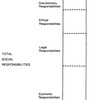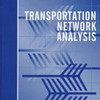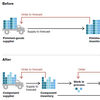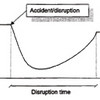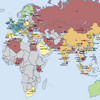 If you are doing global business, do you know where you are at risk and what risk that is most pertinent to that area? Most likely not, I would guess. AON, who in 2009 published the political risk map, identifying where supply chain risks are on the rise, has now published a people risk map that shows which countries are high or low risk. The accompanying report provides “a comparative overview of risks associated with recruitment, employment and relocation in 90 cities worldwide. These ratings enables companies to compare risk by location, identify the reasons for the risks, and determine actions to address these risks.” Is it as good as it sounds? Well, let’s have a closer look at the map and the report.
If you are doing global business, do you know where you are at risk and what risk that is most pertinent to that area? Most likely not, I would guess. AON, who in 2009 published the political risk map, identifying where supply chain risks are on the rise, has now published a people risk map that shows which countries are high or low risk. The accompanying report provides “a comparative overview of risks associated with recruitment, employment and relocation in 90 cities worldwide. These ratings enables companies to compare risk by location, identify the reasons for the risks, and determine actions to address these risks.” Is it as good as it sounds? Well, let’s have a closer look at the map and the report.
What are people risks?
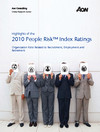 According to AON, every organization is subject to people risk at every stage of the employment cycle – recruitment, employment, or retirement. More importantly, people risk often has a significant impact on the success or failure of a venture. Some risks are created by a company’s policies and practices, while others are due to the location in which a company operates. Global corporate HR policies and practices need to take into account the local conditions and risks prevailing in each location where a company operates:
According to AON, every organization is subject to people risk at every stage of the employment cycle – recruitment, employment, or retirement. More importantly, people risk often has a significant impact on the success or failure of a venture. Some risks are created by a company’s policies and practices, while others are due to the location in which a company operates. Global corporate HR policies and practices need to take into account the local conditions and risks prevailing in each location where a company operates:
Risks associated with recruitment
- The risk of not finding qualified candidates
- The risk of hiring people that do not fit the organization culture
- The risk of hiring people who do not have relevant experience or capabilities
Risks associated with employment
- The risk of losing people the company wants to keep
- The risk of paying too much, too little or for the wrong things
- The risk of increasing employment costs that later cannot be reduced
Risks associated with restructuring, retirement, and retrenchment
- The risk of moving people into new jobs, new organizations or new locations
- The risk of people retiring or letting people go
- The risks of incurring costs after people are gone
Understanding risks associated with both operations and locations is critical to business success, and while this is well understood by globally experienced HR practitioners, assessing the risks associated with people is often ad hoc, subjective and nonquantifiable, say AON. The result can be a poor understanding of the underlying and full business risks of operating in any given location.
25 factors
The AON People Risk Map identifies 25 critical factors impacting People Risk by location. These 25 factors are clustered into five areas of People Risk:
- Demographic risks are those associated with labor supply, the economy and the society.
- People risks associated with Government Support are those where government policies and practices either help or hinder the management of people in that location.
- Education risk factors seek to measure risks associated with finding qualified professionals in a location.
- Talent Development risk factors look at the quality and availability of recruiting and training resources.
- Employment Practices risk factors seek to measure the risks associated with employing people in a given location.
The individual factors are listed below:
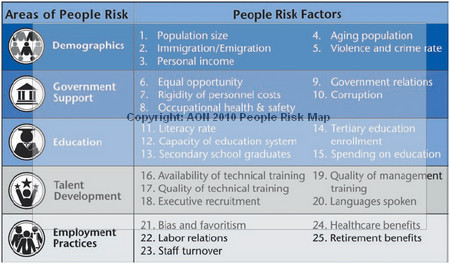
Used on a world map, people risk displays like this:
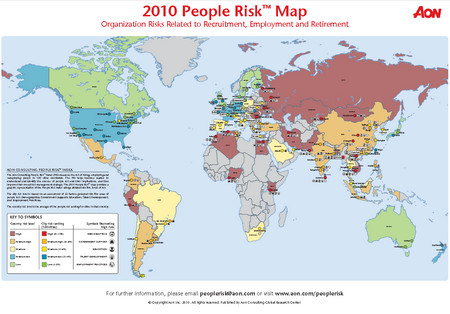 Interestingly, my own country, Norway, has not been ranked. As there is no explanation given to why some countries have been ranked and why some have not, I’m not going to guess. Except for the obvious “not important enough”. It certainly cannot be for the lack of available data. After all, last year they did manage to fit Norway into their Commodity Crunch Exposure Matrix.
Interestingly, my own country, Norway, has not been ranked. As there is no explanation given to why some countries have been ranked and why some have not, I’m not going to guess. Except for the obvious “not important enough”. It certainly cannot be for the lack of available data. After all, last year they did manage to fit Norway into their Commodity Crunch Exposure Matrix.
Top 3 and Bottom 3
The report lists these cities as the top 3 (lowest risk) and bottom 3 (highest risk) among the 90 cities that are ranked:
1. Toronto, Canada
2. New York, USA
3. Singapore, Singapore
…
88. Lagos, Nigeria
89. Phnom Penh, Cambodia
90. Dhaka, Bangladesh
Regional insights
The report is well worth reading and does provide some valuable regional insights, where the results are discussed and broken down in more detail for Europe, the Americas, Asia Pacific, the Middle East and Africa. While the map and the report on one hand are an obvious and clever marketing tool for AON’s consulting services, I also believe that they can provide some firsthand information for a company seeking to globalize its operations. In my opinion the AON map and report perfectly complements the Global Risk Reports from the World Economic Forum as a risk management primer for busy executives as well as academics seeking in-depth analysis.
As global economic growth continues to shift from the developed markets to the emerging markets, companies are seeking more localization in their people strategy to capitalize on the faster growth opportunities in these markets. This means companies will want to increase their presence by hiring talents from, and deploying talents to, these emerging markets. The better a company understands the people risks related to each local market, the better equipped they will be to realize the business opportunities.
So says AON. For more information on the map and the report, use the download link below.
Download
- aon.com: People Risk map
Related
- husdal.com: AON Political Risk Map


